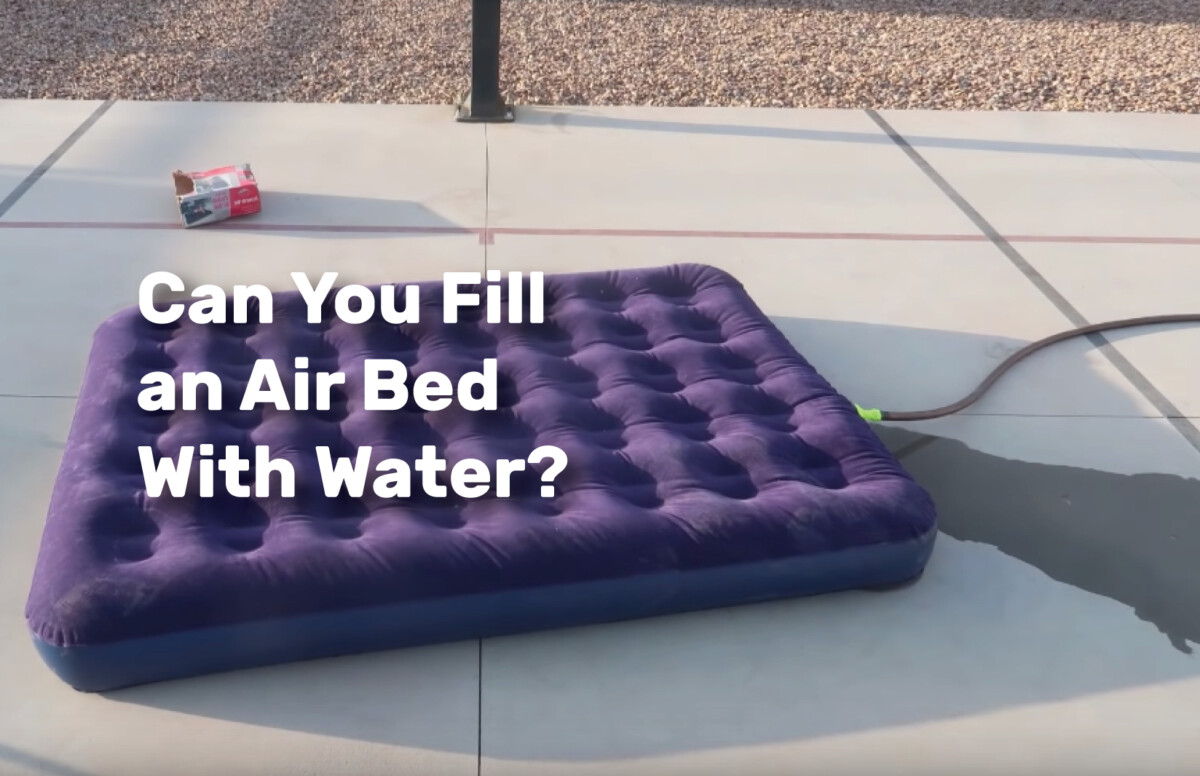For those looking to buy a new air bed, a question that has likely popped up is: can you fill an air bed with water? This has been asked by many, especially those that have never used an air bed before.
Air beds are getting more and more popular, with many people choosing them over traditional mattresses.
But is it ok to use water in them? Not at all because water is heavier than air and can cause leaks or molds to occur.
An air bed is a form of inflatable furniture that, unlike some forms of furniture, is designed for comfort above all else while making it portable.
However, air beds can be blown up to desired firmness, and can be adjusted between uses if their firmness is something you might change frequently, unlike with other types of furniture.
One of the goals of air beds is to make your sleeping experience as restful as possible, while also taking up as little space as possible.
With that said, let’s look at why it won’t be a good idea to use air beds with water instead of air.
Why you should not fill an air bed with water
Air beds are a great alternative to traditional mattresses, as they offer much of the same comfort and support without the hassle of setting up a frame.
However, most air beds are filled with air, not water.
This makes them lighter and easier to move, but it means they can’t be topped off with additional water, making them susceptible to leaks.
Filling it with water will cause the bed to lose its support.
And the heavier they become, the more difficult it gets to move them.
Another common problem with using water is the development of mold, which will further destroy the air bed.
If you currently own an air bed, or are thinking about purchasing one, you should consider this before taking the plunge.
Don’t buy an air bed if you need to fill it with water!
Air beds are economical, comfortable, and durable and they don’t require any extra work to inflate.
How air beds work
Air beds are a great way to improve your sleep, but they work a bit differently than regular mattresses.
Air beds are becoming more and more popular as they offer a range of advantages not found in a traditional bed.
The core of air beds is their ability to be moved and stored away easily, and with the added bonus of being able to be inflated at home, in the car or in a hotel.
Although the original design has been around for so long, it’s still a bed that is used today by many travelers.
As we discussed, air beds are filled with air.
The secret to an airbed is its air chamber, which takes the place of a boxspring.
Instead of coils, an air chamber is made of flexible, heavy-duty vinyl surrounded by a vinyl shroud that is firm.
It inflates with air from an inbuilt or a separate pump that connects to the air chamber, which can also be inflated and deflated manually.
In most cases, you can adjust the amount of air in the mattress to make it softer, harder, or adjust the firmness using the pump and the valve.
Difference between an air bed and air mattress
Frequently, people use the terms “air bed” and “air mattress” interchangeably.
If you’re one of the many people who are confused about the difference between an air bed and an air mattress, you’re not alone.
There are some important differences that you should consider when you buy your next piece of inflatables.
The difference is in the way they’re used.
An air bed is designed for at least occasional (if not regular) use outdoors.
You can find them where people are camping.
As an outdoor enthusiast, I’ve used an air bed for a number of activities, and I have to say I really love it.
An air mattress, on the other hand, is for temporary use at home.
You might find an air mattress at a relative’s place, or at a friend’s house when you need a place to sleep for a few nights.
If you’re thinking of buying either, take some time to learn about the different types of air beds and plan your purchase wisely!
Types of air beds
While air beds are typically used to provide temporary sleeping arrangements, they can also be used as a solution to furnish a guest bedroom or a home office.
There are several types of air beds available on the market today, including:
- Closed-Cell Foam – High-tech air beds are made of memory foam and have several built-in features that make them bulkier.
- Alternating Air – These are beds with a dynamic surface made of soft vinyl and air cells that alternate their firmness to adjust to your sleeping position
- Double-Sided Airbeds – These beds are made of soft vinyl and have a double-sided design.
In general, air beds can have an external pump or be self-inflatable.
Final thoughts
In this article we discussed whether you can fill an air bed with water.
No, you cannot fill an air bed with water; the two materials are not compatible.
While water does not compress, air beds are made of flexible plastic that does.
Therefore, you can only fill an air bed with air—no matter how good a seal you achieve.
It’ll also be much harder to deflate, since waterlogged air beds always weigh more than air beds that have been properly blown up.




